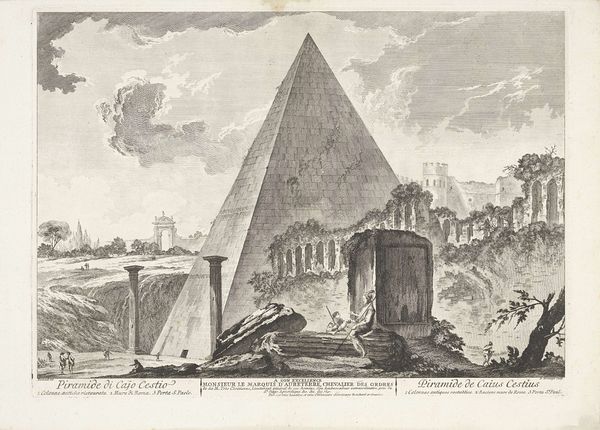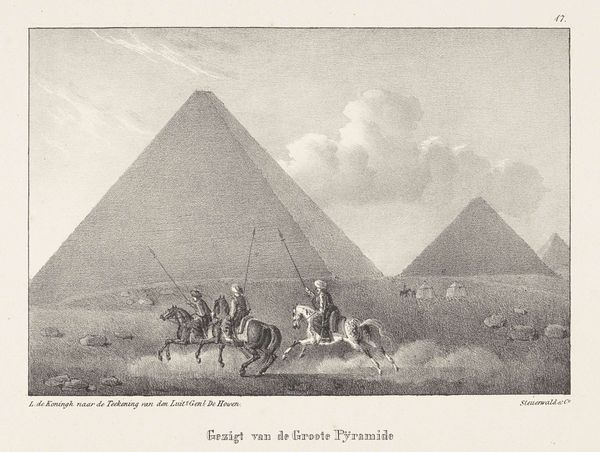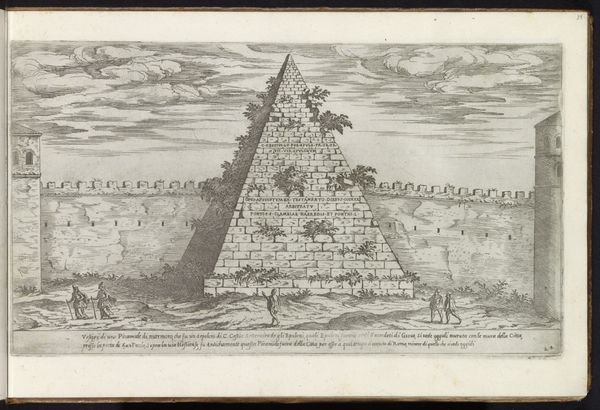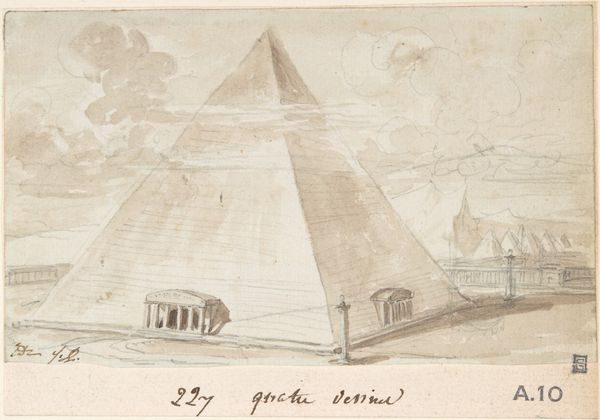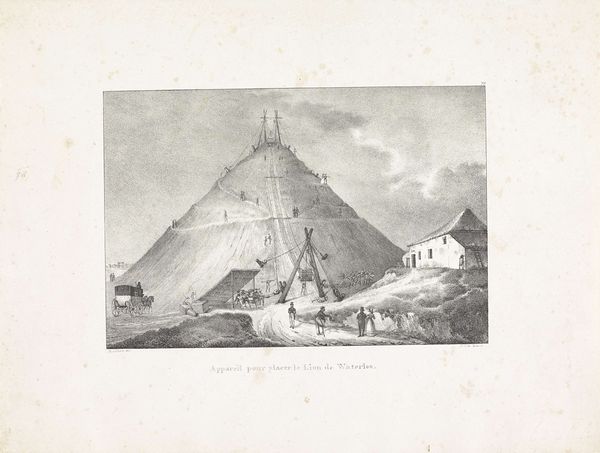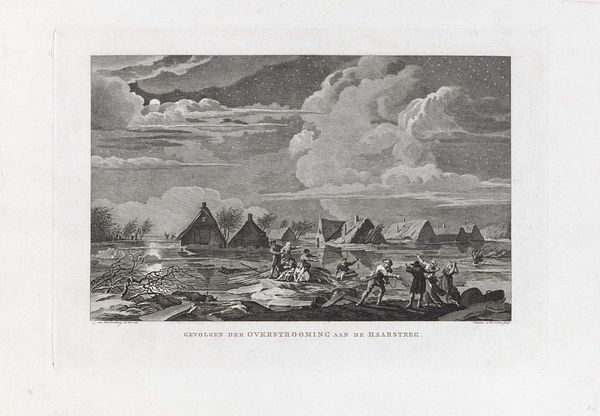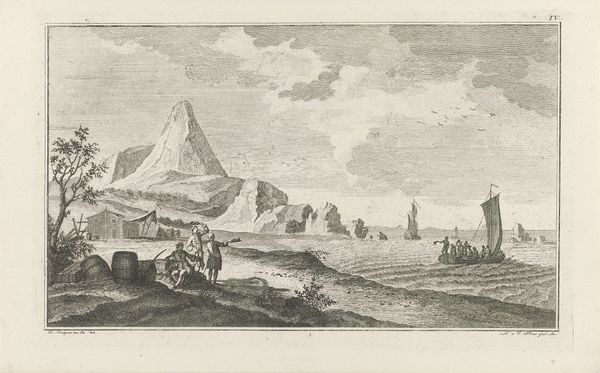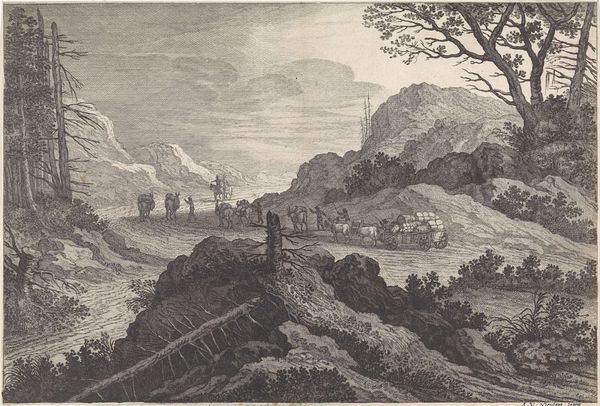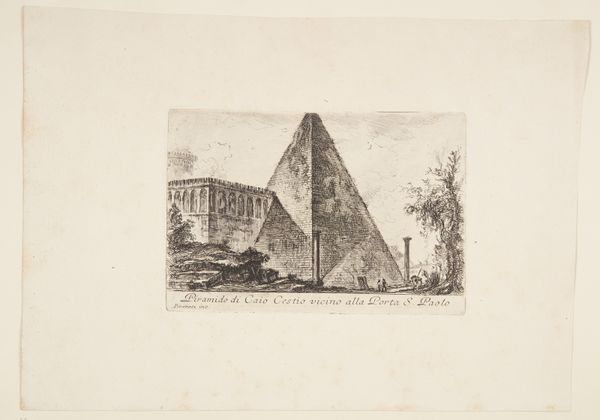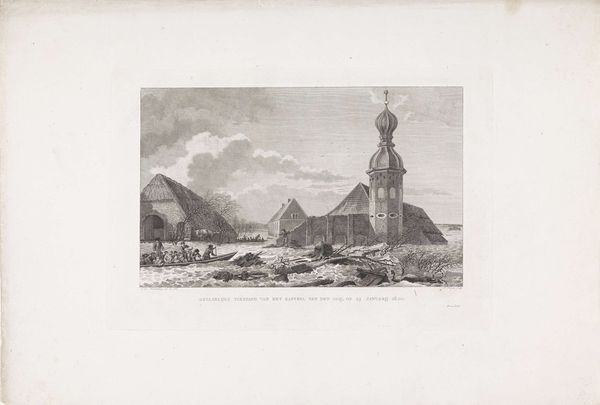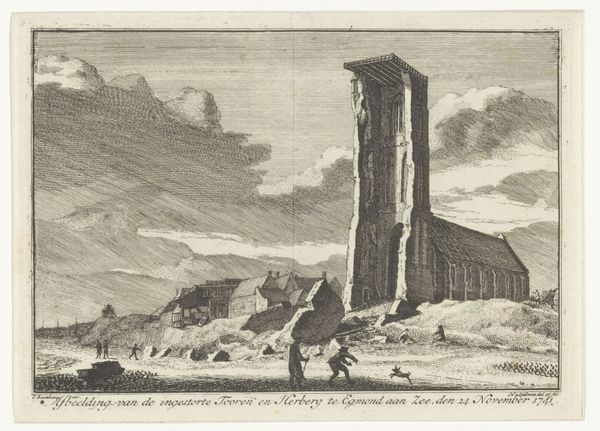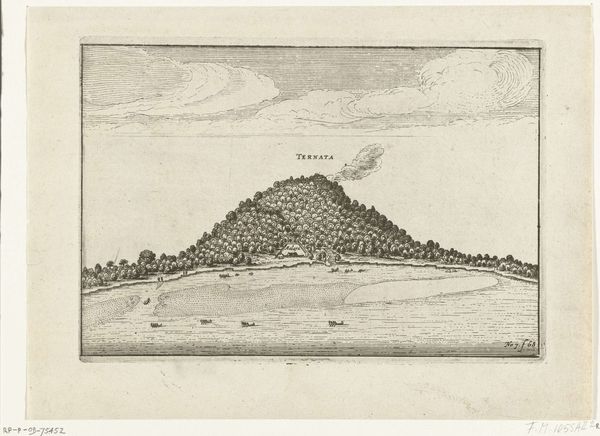
Dimensions: height 180 mm, width 303 mm
Copyright: Rijks Museum: Open Domain
Jan Caspar Philips made this print of a Landscape with Three Pyramids, using etching, around the mid-18th century in the Netherlands. While Philips never travelled to Egypt, the pyramids were of great interest to Europeans, who saw them as ancient wonders. But this image is not simply a neutral record. It reflects the European perspective of the time. The inclusion of local people and animals, for example, places the pyramids within a social context. Moreover, the pyramids themselves are depicted with a degree of idealization. Their surfaces are smooth and regular, whereas, in reality, they had become weathered and eroded over centuries. The image then creates meaning through visual codes, cultural references, and historical associations. As art historians, it is our role to examine the social conditions that shape artistic production. By consulting historical accounts, travel narratives, and other sources, we can gain a richer understanding of what Philips intended to convey. We come to see art as something contingent on social and institutional context.
Comments
No comments
Be the first to comment and join the conversation on the ultimate creative platform.
